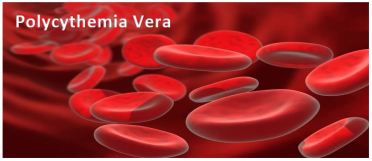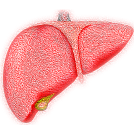 Polycythemia vera is a rare disease in which the body makes too many red blood cells. The excess cells make the blood too thick, this thickness causes blood to flow very slowly. It is a slow-growing cancer of the blood.
Polycythemia vera is a rare disease in which the body makes too many red blood cells. The excess cells make the blood too thick, this thickness causes blood to flow very slowly. It is a slow-growing cancer of the blood.
A person may have this disease and not know, it may be discovered during a blood test for another reason. A rare disease that can occur at any age, but it is common in people over 60 years. Polycythemia vera can be life-threatening if it is not treated quickly. Survival time may be 10 to 15 years with new treatment.
There are two types:
- Primary which is a chronic myeloproliferative disorder from chromosomal mutation.
- Secondary polycythemia can be hypoxia driven. Hypoxia stimulates the kidneys to produce more erythropoietin which then stimulates the production of erythrocytes. The need for more oxygen in the secondary type could be due to multiple reasons: cardiovascular disease, pulmonary disease, or tissue hypoxia.
Sign and Symptoms:
- Hypertension and Hyperviscosity from polycythemia vera are the cause of circulatory manifestations that are seen in this disorder.
- Polycythemia vera causes headache, vertigo, tinnitus
- Pruritus which is exacerbated by hot bath may be a confirmatory symptom.
- Other sign and symptoms include painful fingers and toes, hyperuricemia, weakness, and easy fatigability.
Complications include abnormal blood clots, which can lead to a heart attack or stroke.
Diagnostic tests:
Blood tests – elevated hemoglobin, increased platelets, uric acid, cobalamin levels. Increased histamine levels. Increased RBCs are noted in Bone marrow examination.
Treatment for polycythemia vera includes administering oxygen, radioisotope therapy, or chemotherapy agents for bone marrow suppression. Phlebotomy is the top treatment, to reduce the percentage of hematocrit; during phlebotomy, about 300ml of blood or more may be removed every other day until hematocrit is down to normal level.
Nursing Interventions
- Maintain adequate oxygenation. This may prevent secondary polycythemia; primary polycythemia is not preventable.
- Control of pulmonary diseases, teach client to stop smoking.
- Educate clients to avoid high altitudes
- Assist with phlebotomy per orders and facility policies during acute exacerbations
- Monitor client for complications that may result from phlebotomy
- Monitor hydration therapy closely to avoid fluid overload.
- Moderate activities, to decrease the risk of clot formation
Reference: Lewis & Heitkemper, Med-Surg Nursing 2007
Rophem Nursing 😊

